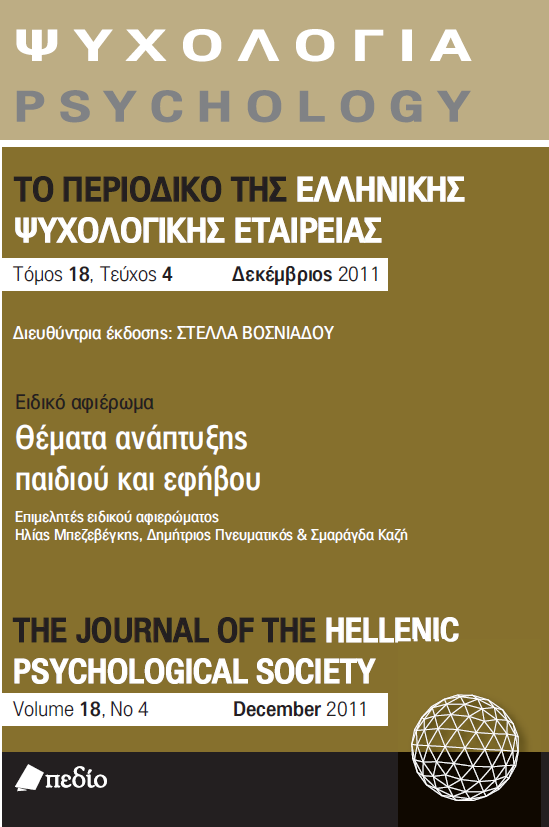Bullying and victimization at school: personal and family parameters

Abstract
The present paper aims at describing the factors that contribute in the
development of bullying and victimization at school. Prior research has identified three distinct groups of children participating in the above phenomenon: bullies, passive victims and aggressive victims (or bully-victims). These groups have different profiles in their intraindividual
(personal), as well as their family environments. The most important personal characteristics refer to their temperament, the degree of psycho-pathology issues, gender and age. Further, differences have
been found in terms of attitudes such as attributions, and in terms of being different in a way that sets the individual apart from a mainstream group. Regarding family parameters, factors such as parental
involvement and parental style, as well as parental depression have been shown to be related to child bullying and victimization at school. Among the many explanatory models that have been suggested, very
popular are recently the transactional models, proposing that a bi-directional influence exists between parents and children.
Article Details
- How to Cite
-
Ν. Γεωργίου Σ., & Φαίδωνος Φ. (2020). Bullying and victimization at school: personal and family parameters. Psychology: The Journal of the Hellenic Psychological Society, 18(4), 484–502. https://doi.org/10.12681/psy_hps.23735
- Issue
- Vol. 18 No. 4 (2011)
- Section
- SPECIAL SECTION

This work is licensed under a Creative Commons Attribution-ShareAlike 4.0 International License.
The journal PSYCHOLOGY adopts a Platinum open-access policy. Submission, processing or publication costs are waived by the Hellenic Psychological Society. Papers published in the journal PSYCHOLOGY are licensed under a 'Creative Commons Attribution-ShareAlike 4.0 International' licence. The authors reserve the copyright of their work and grant the journal the right of its first publication. Third-party licensees are allowed to use the published paper immediately after publication as they wish, provided they retain the defined by the license copyright formalities, regarding the reference to its author(s) and its initial publication in the journal PSYCHOLOGY. Moreover, any adjusted work should be shared under the same reuse rights, so with the same CC license.



